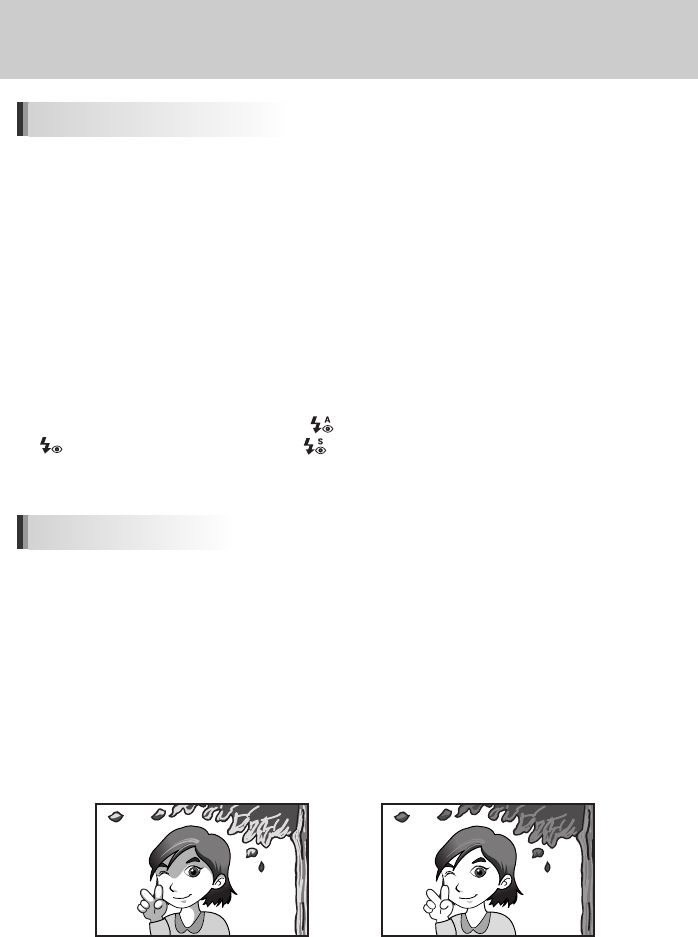
ŝ74Ş
Using the Built-in Flash
ƈ “Red-eye” is the phenomenon where eyes look reddish in photographs taken in dark environments
with a flash. This is caused by the reflection of the electronic flash from the retina of the eye.
Red-eye occurs because pupils are dilated in dark environments.
This phenomenon cannot be averted but the following measures can be used to combat it.
ŋBrighten the surroundings when shooting.
ŋIf using a zoom lens, set it to wide-angle and move in closer to your subject.
ŋUse a flash that supports red-eye reduction.
ŋPosition the flash as far away from the camera as possible when using an external flash.
The red-eye reduction function on this camera reduces red-eye by discharging the flash twice.
With the red-eye reduction function, the pre-flash is discharged just before the shutter is released.
This reduces pupil dilation. The main flash is then discharged while the pupils are smaller, reducing
the red-eye effect.
To use the red-eye reduction function, set (Auto+Red-eye reduction) in Auto mode and
(Fill-in Flash+Red-eye reduction) or (Slow speed sync+Red-eye reduction in other modes.
ƈ In daylight conditions, the flash will eliminate shadows when a portrait picture is taken with a person’s
face cast in shadow. Use of the flash in this way is called Daylight-Sync Shooting. Flash is discharged
manually when shooting with Daylight-Sync Shooting.
ƃ Taking pictures (Hyper program)
1. Confirm that the flash has popped up and the flash mode is set to Fill-in Flash. (p.70)
2. Confirm that the flash is fully charged.
3. Take the picture.
ſ The picture may be over-exposed if the background is too bright.
[Without Daylight-Sync] [With Daylight-Sync]
Using Red-eye Reduction Flash
Daylight-Sync Shooting


















